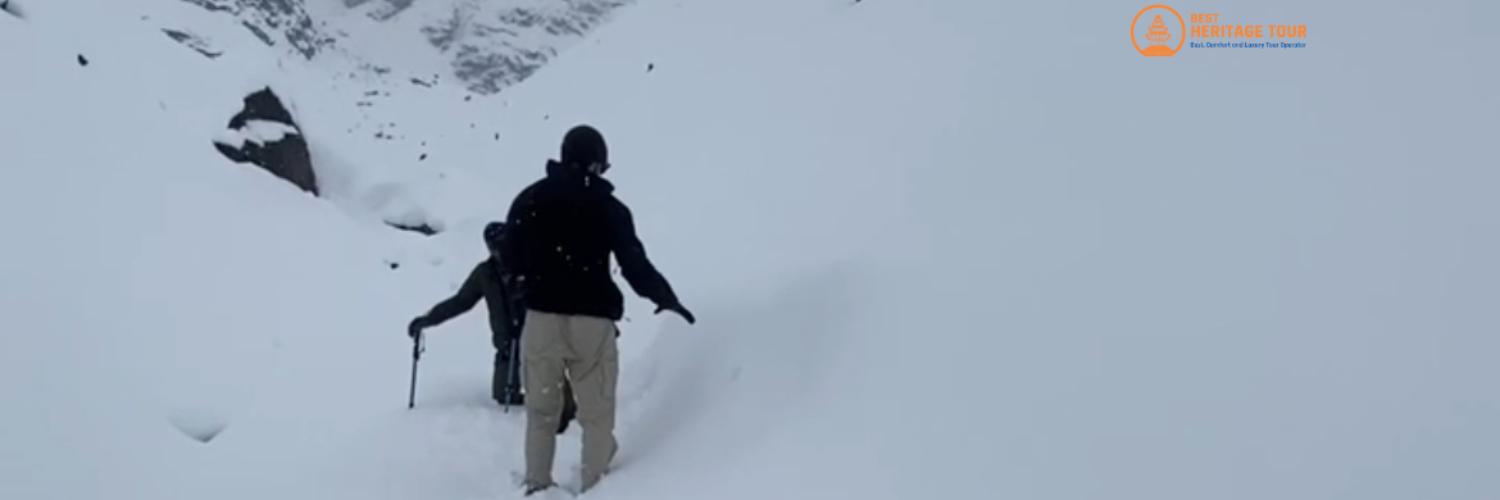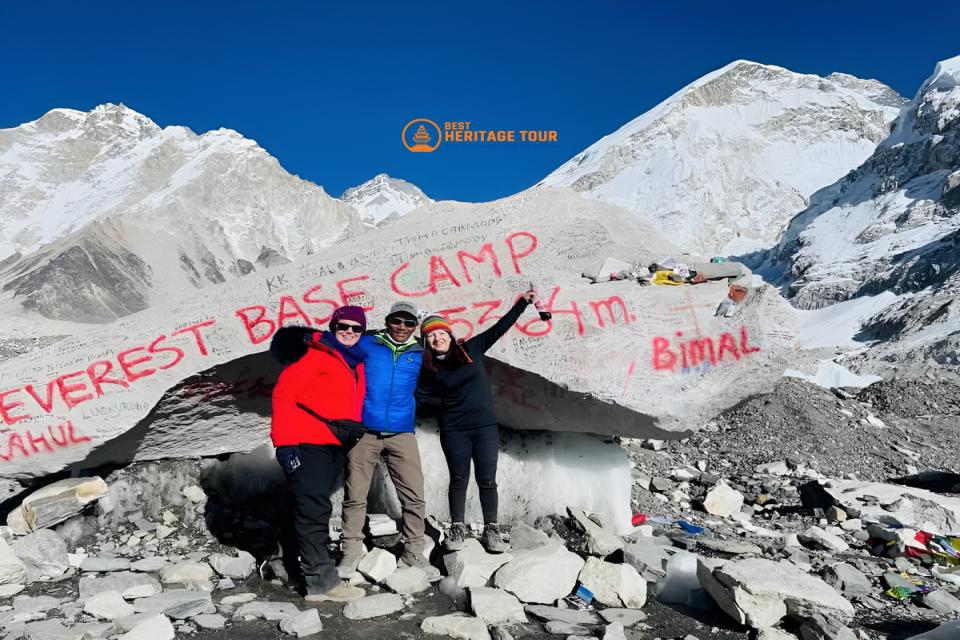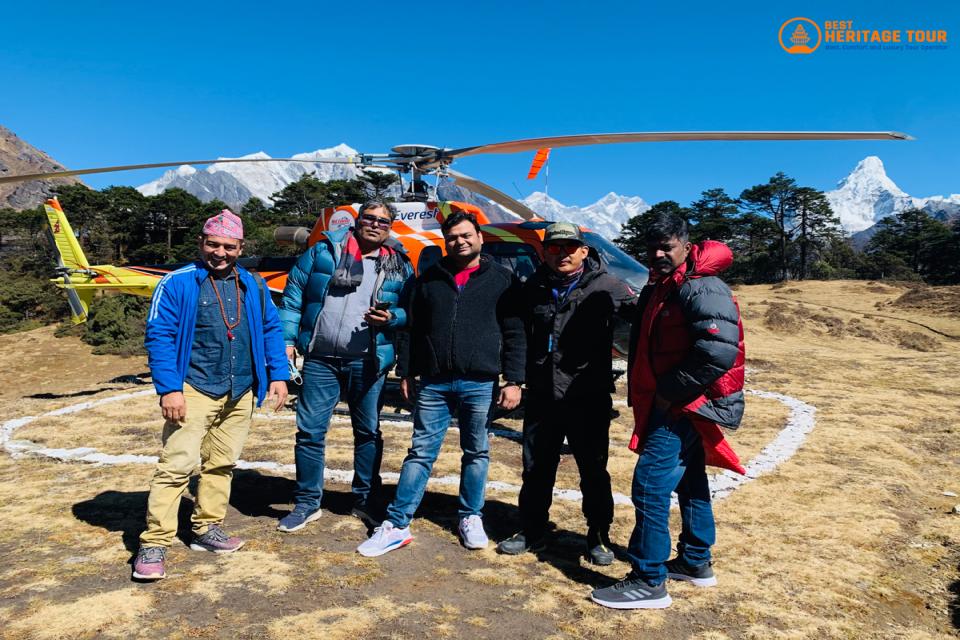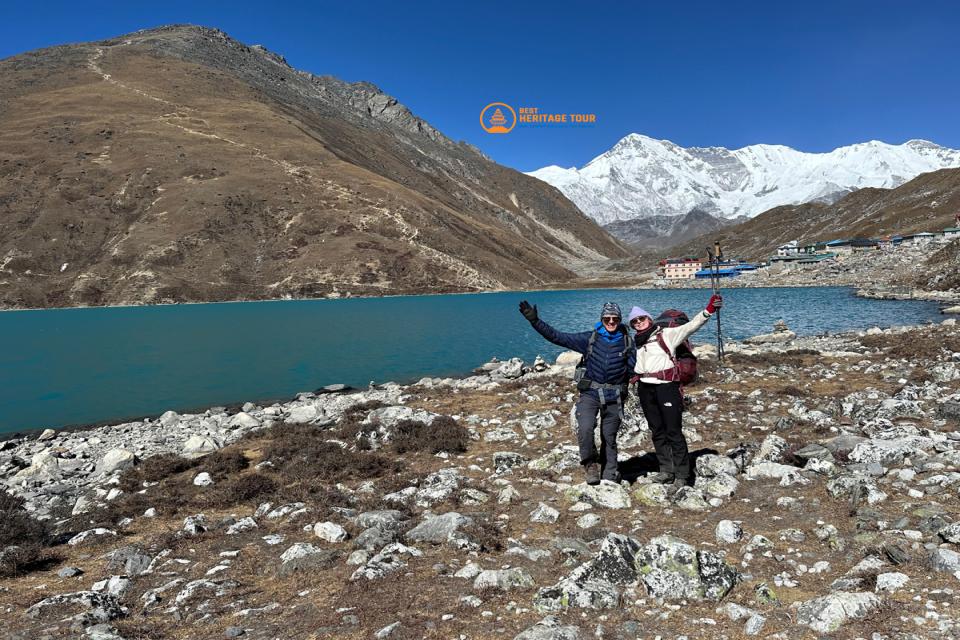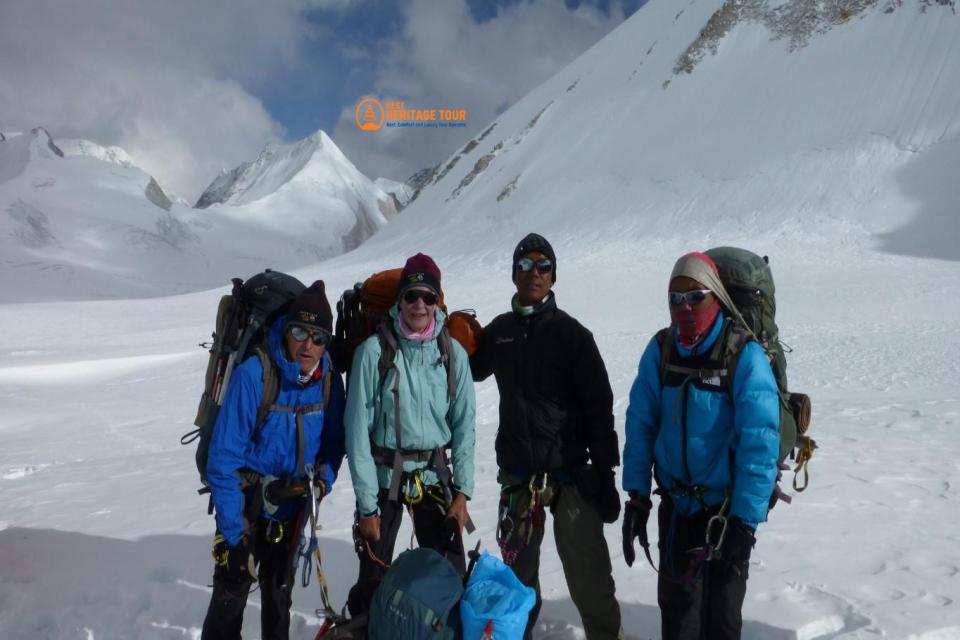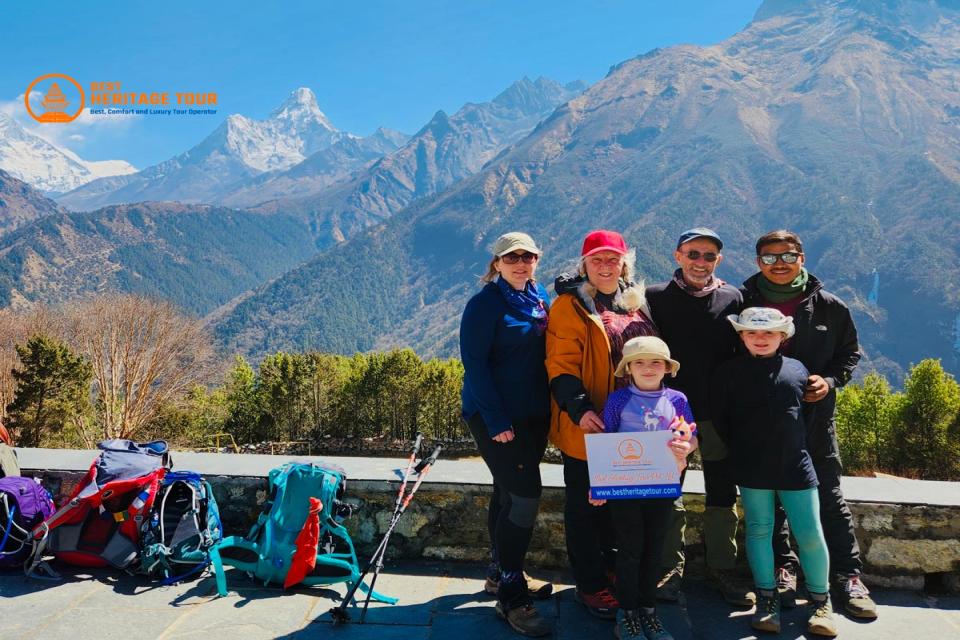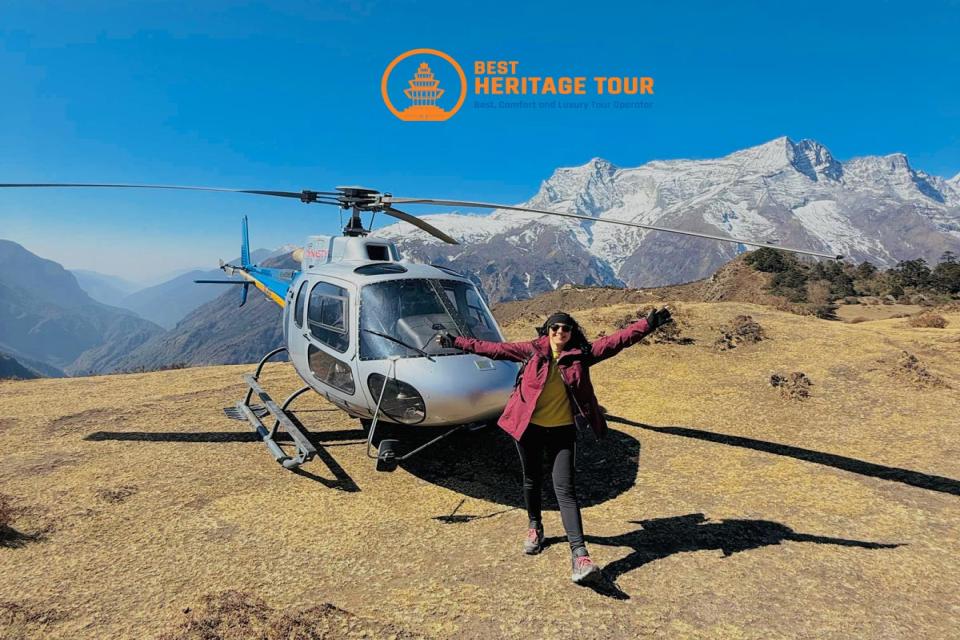The Everest Base Camp (EBC) trail is one of the world’s most iconic trekking routes, attracting thousands of adventurers each year. However, late October 2025 has brought unexpected weather changes along the trail, including heavy snowfall in higher altitudes, low temperatures, and challenging conditions for trekkers. This blog provides an in-depth update on the current weather, official advisories, and crucial safety guidance for anyone on or planning the EBC trek.
Current Weather Situation on the Everest Base Camp Trail
According to the Department of Hydrology and Meteorology (DHM) of Nepal, the Everest region is experiencing persistent snowfall and rapidly dropping temperatures as of October 27-29, 2025. The snow accumulation is particularly significant above Lobuche and Gorak Shep, affecting the upper sections of the EBC trail.
Key observations:
-
Trail Conditions: Many sections are slippery and partially covered with snow, making trekking difficult and hazardous.
-
Temperature: Daytime temperatures range from -2°C to 5°C, while nighttime temperatures drop as low as -10°C in higher altitudes.
-
Visibility: Cloud cover and snowfall are reducing visibility, especially near Kala Patthar and Everest Base Camp.
These conditions make trekking risky, particularly for trekkers without proper winter gear or experience in snow-covered trails.
Official Advisory for Trekkers
Due to the extreme weather, several authorities have issued urgent advisories:
-
Nepal Tourism Board (NTB), Trekking Agencies’ Association of Nepal (TAAN), and Nepal Mountain Association (NMA) advise halting all trekking activities to higher elevations until weather stabilizes.
-
Local authorities in Solukhumbu recommend that trekkers stay in nearby lodges and guesthouses instead of attempting to continue toward EBC.
The key safety instructions include:
-
Avoid trekking to higher altitudes such as Lobuche, Gorak Shep, and Everest Base Camp until the snowfall stops.
-
Stay in local accommodations in Namche Bazaar, Tengboche, or Dingboche.
-
Monitor weather updates from DHM and local authorities regularly.
-
Follow guidance from trekking agencies and local guides, who are trained in first aid and emergency response.
These measures are crucial to prevent accidents, injuries, or being stranded in snow-covered areas.
Why the Weather Changed Suddenly
The Everest region is naturally prone to rapid weather shifts, especially in late October, due to several factors:
-
Western Disturbances: Cold air currents from Central Asia have brought early-season snow to the region.
-
High Altitude Exposure: Trails above 4,000 meters are particularly vulnerable to extreme cold and snowfall.
-
Climate Variability: Changing climate patterns have contributed to heavier-than-usual snowfall for this time of year.
These combined factors have created a temporary snow blanket over the upper EBC trail, making trekking particularly challenging.
Current Conditions Along Key EBC Trail Sections
1. Lukla to Namche Bazaar
-
Snowfall is moderate, with some slippery sections.
-
Trails are mostly passable but caution is required on steep or exposed areas.
2. Namche Bazaar to Tengboche
-
Snow accumulation is increasing.
-
Lodges in Tengboche and surrounding villages are advising trekkers to stay put until the weather improves.
3. Tengboche to Dingboche
-
Snowfall is heavier here, covering trails and steps.
-
Trekking above Dingboche is currently highly risky due to reduced visibility and icy paths.
4. Dingboche to Lobuche and Gorak Shep
-
Upper trail sections are fully snow-covered.
-
Everest Base Camp and Kala Patthar trails are temporarily impassable by foot.
-
Local authorities strongly advise no trekking in these areas until conditions improve.
5. Mera La and Other High Passes
-
Snow accumulation makes these passes extremely hazardous.
-
Only highly experienced trekkers with winter gear should attempt these routes under official guidance.
Safety Precautions for Trekkers
During heavy snowfall on the Everest Base Camp trail, safety is the top priority. Trekkers should follow these guidelines:
-
Stay in Lodges: Extend your stay in safe accommodations at Namche Bazaar, Tengboche, or Dingboche.
-
Dress for Extreme Cold: Layered clothing, waterproof jackets, insulated boots, gloves, and hats are essential.
-
Monitor Weather Updates: Follow DHM forecasts and local trekking agency advisories.
-
Limit Exposure: Avoid trekking or spending extended time outdoors during heavy snow.
-
Communicate: Inform your trekking agency or guide about your location and movement plans.
-
Emergency Preparedness: Carry basic first aid kits, flashlights, and extra food in case of snow delays.
Following these precautions can prevent frostbite, hypothermia, and accidents on snow-covered trails.
Official Weather Forecast: October 27–29, 2025
DHM forecasts for the Everest region indicate:
-
Snowfall: Persistent, especially above 4,000 meters (Dingboche, Lobuche, Gorak Shep).
-
Temperature: Daytime 0–5°C; nighttime -5°C to -10°C.
-
Wind: Moderate to strong, intensifying cold conditions and risk of frostbite.
-
Visibility: Poor due to snow and cloud cover, making navigation difficult.
Trekkers are advised to avoid attempting the upper sections of the trail until snow decreases and visibility improves.
Importance of Following Official Advisories
Ignoring official advisories can lead to serious consequences:
-
Trail Hazards: Snow-covered trails can lead to slips, falls, and altitude-related emergencies.
-
Hypothermia & Frostbite: Exposure to cold without proper gear can become life-threatening.
-
Stranded Trekkers: Roads and trails may be blocked, delaying emergency assistance.
-
Avalanche Risk: Heavy snow increases the likelihood of avalanches in exposed areas.
Authorities including NTB, TAAN, NMA, and Solukhumbu local offices emphasize that staying in lodges and following local guidance is the safest course of action.
Summary
-
Everest Base Camp trail is experiencing heavy snowfall as of late October 2025.
-
Upper sections (Lobuche, Gorak Shep, EBC, Kala Patthar) are fully snow-covered, making trekking extremely hazardous.
-
Official advisories urge trekkers to halt travel, stay in local lodges, and monitor DHM weather updates.
-
Safety measures include staying indoors, wearing insulated clothing, and following guidance from local authorities and trekking agencies.
-
Trekking in snow-covered areas should be avoided until weather conditions stabilize.
Following these guidelines will ensure that trekkers and tourists remain safe while experiencing the incredible beauty of the Everest region once conditions improve.
For trekkers, tourists, and families seeking updated weather information or guidance along the EBC trail, contact Best Heritage Tour, a trusted trekking and travel agency with experienced local guides:
Phone: +977-9851149197/+977-9810043046
Email: info@bestheritagetour.com / bestheritagetour@gmail.com
Website: www.bestheritagetour.com
Office: Thamel, Kathmandu, Nepal
Author: Best Heritage Tour
Date: 29th October, 2025

